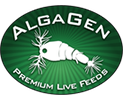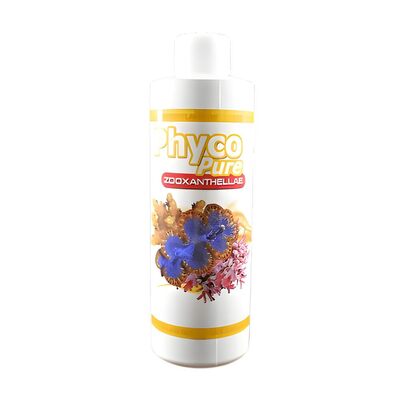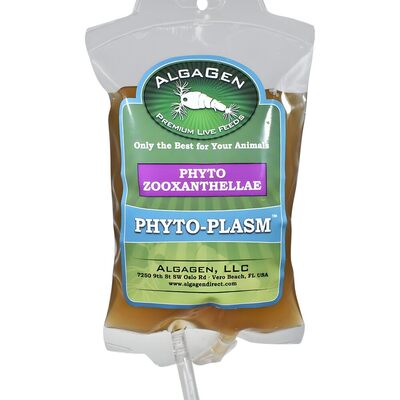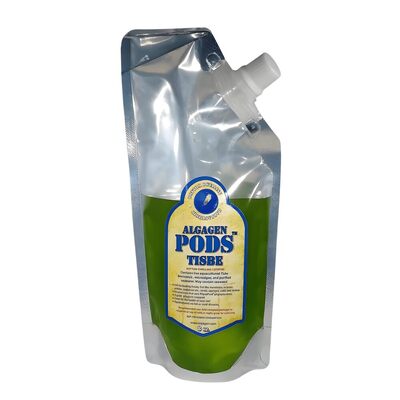Maintaining a vibrant and healthy aquarium requires attention to the minor details, including the tiny organisms supporting the ecosystem. Rotifers, microscopic marvels of the aquatic world, play a vital role in this environment. Their wheel-like cilia, which they use for feeding and moving, make them an essential live food source for fish larvae and small invertebrates. Understanding the best rotifer diet is crucial for any aquarist looking to enhance their tank's biodiversity and support the growth of young fish. This article delves into the optimal diet for rotifers, how to maintain a healthy culture, and the significant impact of a balanced diet on their role in your aquarium.
What Are Rotifers?
Rotifers are minuscule, multicellular organisms found in both freshwater and marine environments. Belonging to the phylum Rotifera, these creatures typically measure between 50 and 500 micrometers. They are characterized by their wheel-like cilia, which they use to create water currents that help them capture food particles. Rotifers are efficient filter feeders, consuming algae, bacteria, and organic detritus, and they play a crucial role in the aquatic food web.
Importance in Aquariums
In aquariums, rotifers are a nutrient-rich live food source for fish larvae and small invertebrates. Their high protein content and essential fatty acids make them ideal for supporting the growth and development of young fish. Furthermore, rotifers help maintain water quality by consuming excess algae and organic matter, contributing to a stable and balanced ecosystem.
The Significance of a Balanced Rotifer Diet
Feeding rotifers the proper diet is essential for several reasons:
- Nutritional Value: The diet of rotifers directly affects their nutritional profile as a food source for your aquarium's inhabitants. Well-fed rotifers are more prosperous in proteins, lipids, and essential nutrients, providing more significant benefits to the fish and invertebrates that consume them.
- Growth and Reproduction: A balanced diet supports the rapid growth and prolific reproduction of rotifers. This is crucial for maintaining a steady supply of live food and efficiently culturing rotifers.
- Water Quality: Rotifers with a proper diet convert their food into biomass more effectively, reducing waste accumulation and maintaining better water quality in the tank.
Critical Components of the Best Rotifer Diet
1. Microalgae
Microalgae are the cornerstone of a nutritious rotifer diet. They provide essential proteins, fatty acids, and vitamins crucial for the health and reproduction of rotifers. Commonly used types of microalgae include:
- Nannochloropsis: Rich in omega-3 fatty acids, Nannochloropsis is highly nutritious and supports rapid growth and reproduction in rotifers.
- Isochrysis: Known for its high lipid content, Isochrysis enhances the nutritional value of rotifers and is especially beneficial for marine cultures.
- Tetraselmis: This algae is high in chlorophyll and provides essential amino and fatty acids, making it a versatile food source for freshwater and marine rotifers.
2. Commercial Rotifer Feeds
In addition to live microalgae, commercially prepared rotifer feeds are designed to provide a complete and balanced diet. These feeds are easy to use and formulated to support the nutritional needs of rotifers. Some popular commercial rotifer feeds include:
- Rotigrow: A concentrated feed specifically for rotifers, containing a blend of nutrients that promote rapid growth and reproduction.
- RGcomplete: A liquid feed that combines microalgae with essential nutrients, designed to maximize rotifer health and nutritional value.
3. Phytoplankton
Phytoplankton are microscopic plants that form a vital part of the rotifer diet. They are a rich source of nutrients and are readily consumed by rotifers. Culturing phytoplankton alongside rotifers provides a continuous and fresh supply of food. Common phytoplankton used in rotifer diets include:
- Chlorella: High in protein and chlorophyll, Chlorella is an excellent rotifer food source.
- Dunaliella: Rich in beta-carotene and essential vitamins, Dunaliella enhances the nutritional profile of rotifers.
4. Bacteria and Organic Detritus
In their natural habitats, rotifers also consume bacteria and organic detritus. While not the primary focus in cultured diets, these materials can supplement rotifer nutrition and mimic their natural feeding conditions. Ensuring a clean culture environment with some organic matter can provide additional nutrients for rotifers.
Feeding and Maintaining Rotifers
1. Appropriate Food Quantity
Feeding rotifers the right amount of food is crucial to avoid overfeeding, which can degrade water quality. Monitor the clarity of the culture water and adjust the food quantity to keep the water slightly cloudy, indicating that the rotifers are consuming the food effectively.
2. Keeping Cultures Healthy
Maintaining a healthy rotifer culture involves regularly cleaning the culture container and performing partial water changes. This helps remove waste and prevents the accumulation of harmful bacteria or toxins. Always use dechlorinated or filtered water to maintain a clean culture environment.
3. Enriching Rotifers
Enriching or gut-loading rotifers before feeding them to your aquarium inhabitants can significantly enhance their nutritional value. This process involves feeding rotifers a nutrient-rich diet shortly before they are harvested, ensuring they provide more essential nutrients to your fish and invertebrates. Commercial enrichment products often contain a blend of essential fatty acids, proteins, and vitamins.
4. Using Multiple Food Sources
Providing a varied diet ensures that rotifers receive a wide range of nutrients. Combining different types of microalgae, commercial feeds, and phytoplankton creates a more balanced and nutritious diet, supporting healthier and more robust rotifer populations.
5. Monitoring Water Quality
Regularly test the water quality in your rotifer culture to keep ammonia, nitrites, and nitrates at safe levels. Proper filtration and aeration help maintain optimal conditions for rotifer growth and reproduction.
Integrating Rotifers into Your Aquarium
1. Acclimation
Acclimate rotifers to your aquarium's water conditions by gradually mixing tank water with the culture water over an hour or two. This process minimizes stress and ensures the rotifers adapt successfully to their new environment.
2. Feeding Rotifers
Introduce rotifers into the tank where your fish are most active to ensure they are consumed quickly. Monitor the amount of rotifers added and adjust based on the feeding response of your tank inhabitants to avoid overfeeding and maintain water quality.
3. Using Rotifers in Breeding Programs
Rotifers are invaluable in breeding programs, especially for supporting the early development stages of fish. Ensure that rotifers are fed a highly nutritious diet to maximize their benefits for fish larvae and fry. Regularly introduce freshly enriched rotifers to provide continuous, high-quality live food.
Conclusion
Understanding the best rotifer diet is essential for maintaining healthy and productive rotifer cultures. By providing a balanced and nutrient-rich diet, you enhance the nutritional value of rotifers, support their growth and reproduction, and ensure they play a vital role in your aquarium ecosystem.
Whether you choose live microalgae, commercial feeds, or a combination of both, ensuring that your rotifers receive a diverse and balanced diet will maximize their benefits for your aquarium. With the right approach, rotifers can significantly contribute to the health and vitality of your tank, promoting better growth, improved water quality, and successful breeding programs. Embrace the power of these tiny organisms and their optimal diet to enhance your aquarium's ecosystem.





Recent post